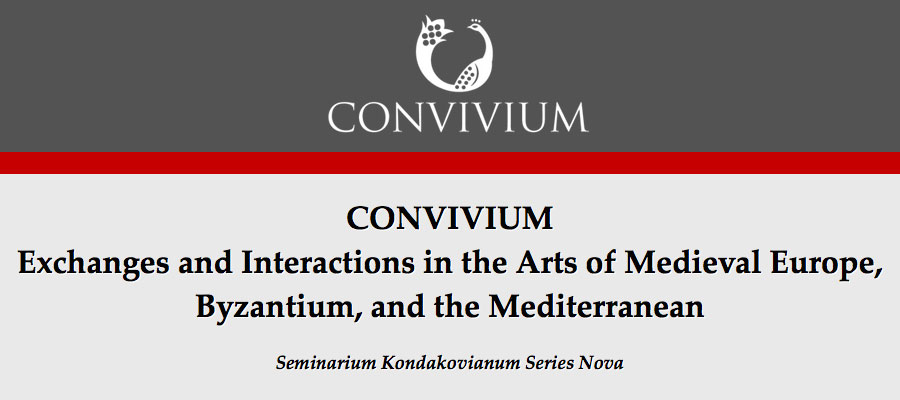Convivium, volume 6, issue 2 (2019).
CONTENTS INCLUDE
Aeizon to amaranton. Intercultural Collaboration in a Late Byzantine Nature Study
Andrew Griebeler
A Late Byzantine nature study in a fifteenth-century manuscript now in the library of London's Natural History Museum is here identified as Sedum rupestre L. or Sedum sediforme (Jacq.) Pau. But the plant depicted, labeled aeizōon to amaranton, has no antecedents in earlier manuscripts; indeed, the name aeizōon to amaranton is unconnected to the ancient botanical tradition, and appears only in Late Byzantine botanical lexica. The picture considered here appears to be a novel creation of the fifteenth century, and may be the product of collaboration between a Latin-speaking scholar of botany and a painter trained in the Byzantine tradition; stylistic analysis establishes the painter's Byzantine training. He or she may have begun life in Constantinople or in a Frankish or Venetian territory such as Crete. This novel nature study may have served as a frontispiece displaying the Byzantine artist's skills of observation and representation.
The Transfiguration and the Eikon of Christ. From Eusebius Letter to Constantina to the Iconoclast Era
Chiara Bordino
In the so-called Letter of Eusebius of Cesarea to Constantina, the section devoted to the Transfiguration of Christ lends itself particularly to comparison with other Early Christian texts that use the Tabor episode as an argument to deny the possibility of seeing or representing Christ. Examples include a portion of the Fragmenta in Lucam, also attributed to Eusebius of Caesarea, and a fragment by Leontius presbyter, quoted in Nicephorus of Constantinople's Refutatio et Eversio. Such consonance helps support the letter's authenticity, an object of an extensive scholarly debate, or at least indicates its early chronology. Furthermore, the interpretation these texts offer seems to be reflected in the visual production. The Transfiguration scene was never represented until the late fourth century; conversely, from the sixth century onwards, it was depicted in several works of art. During the iconoclast controversy, both those who favored icons and their opponents who rejected icons paid great attention to the Tabor episode, which confirms the crucial link between the Transfiguration and the "representability" of Christ.
The Rediscovery of a Byzantine Capital, Reused as a Baptismal Font, in the Nativity Church, Bethlehem
Michele Bacci
The present text provides a preliminary report on a recent, exceptional discovery in the Nativity church, Bethlehem, Palestine. In June 2019, when the restorers of Piacenti group removed the filling materials from the interior of the sixth-century octagonal baptismal font located in the southern aisle of the church nave, another, smaller font was discovered inside. The latter can be dated from either the late sixth or early seventh century and, on dimensional, formal, and functional grounds, is identical with a Byzantine capital preserved in the Islamic Museum on Jerusalem's Haram es-Sharif. The circumstances under which the latter was transformed into a baptismal font will be further elucidated through a systematic analysis of the findings emerged from the archaeological soundings that took place in the last week of August 2019.
The Wolfgang Born Kondakov Institute Correspondence. Art History, Freedom, and the Rising Fear in the 1930s
Adrien Palladino
Between 1931 and 1934, German artist and art historian Wolfgang Born exchanged several letters with the Kondakov Institute in Prague. Written during the troubled years of rising nationalism in Europe, these letters tell both part of Born's story and, indirectly, of the Russian émigré institute itself. Born's life story, until his forced emigration, allows us to question the role of culture at large when the society is under invasive political threat. It shows a trajectory from a vast, interconnected, intellectual milieu towards a fragmented world of émigré scholars. Above all, this epistolary exchange highlights how similar questions on the origins of artistic forms arose in humanistic milieus across Europe. It also illustrates how the rising totalitarian regimes attempted to shoehorn those inquiries into propagandistic, racist narratives.
